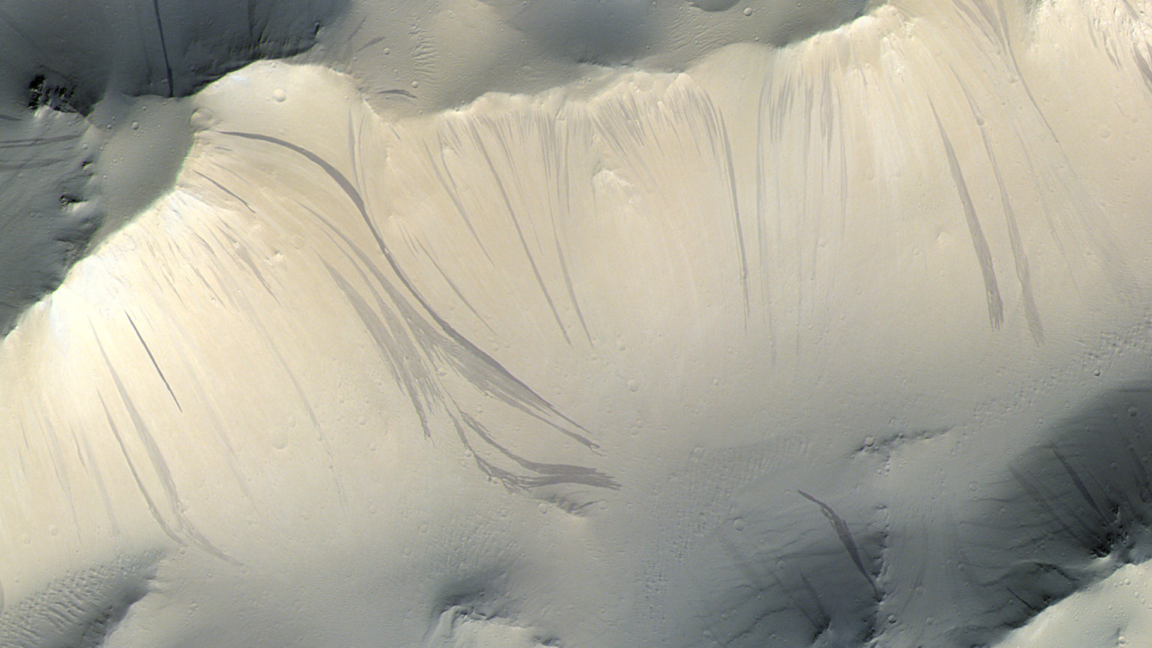
"One of the longest-standing mysteries about Mars has been the presence of dark and light streaks on the rolling hills surrounding Olympus Mons."
"Initially, scientists believed these features might be flows of salty water or brine, which offered the tantalizing possibility that life might yet exist on the surface of Mars."
"According to new research, these slopes are dry, likely due to layers of fine dust suddenly sliding off steep terrain."
"Researchers used a machine learning algorithm to scan and catalog streaks across 86,000 satellite images, creating a map of 500,000 streaks."
Recent research using machine learning analyzed 86,000 satellite images of Mars, revealing that the mysterious dark and light streaks on Olympus Mons are not due to flowing water but rather the dry movement of dust. This finding suggests that the conditions for water may not exist on the slopes, which initially raised hopes for potential life on the planet. The study emphasizes the importance of advanced technology in unraveling planetary mysteries, providing a clearer understanding of Martian geology.
Read at Ars Technica
Unable to calculate read time
Collection
[
|
...
]